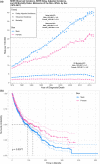Let's talk about sex: A biological variable in immune response against melanoma
- PMID: 35076986
- PMCID: PMC9305920
- DOI: 10.1111/pcmr.13028
Let's talk about sex: A biological variable in immune response against melanoma
Abstract
As science culture gravitates toward a more holistic inclusion of both males and females in research design, the outlining of sex differences and their respective intersections with disease physiology and pathophysiology should see reciprocal expansion. Melanoma skin cancer, for example, has observed a female advantage in incidence, mortality, and overall survival since the early 1970s. The exact biological mechanism of this trend, however, is unclear and further complicated by a layering of clinical variables such as skin phototype, age, and body mass index. In this perspective, we highlight epidemiological evidence of sex differences in melanoma and summarize the landscape of their potential origin. Among several biological hallmarks, we make a note of sex-specific immune profiles-along with divergent hormonal regulation, social practices, DNA damage and oxidative stress responses, body composition, genetic variants, and X-chromosome expression-as probable drivers of disparity in melanoma initiation and progression. This review further focuses the conversation of sex as an influencing factor in melanoma development and its potential implication for disease management and treatment strategies.
Keywords: female; immune; male; melanoma; sex.
© 2022 The Authors. Pigment Cell & Melanoma Research published by John Wiley & Sons Ltd.
Conflict of interest statement
The authors declare no potential conflict of interest.
Figures


References
-
- American Cancer Society (2021). Cancer Facts & Figures. The Society.
-
- Benna, C. , Rajendran, S. , Spiro, G. , Menin, C. , Dall'Olmo, L. , Rossi, C. R. , & Mocellin, S. (2021). Gender‐specific associations between polymorphisms of the circadian gene RORA and cutaneous melanoma susceptibility. Journal of Translational Medicine, 19(1), 57. 10.1186/s12967-021-02725-5 - DOI - PMC - PubMed
-
- Berry, M. , Metzger, D. , & Chambon, P. (1990). Role of the two activating domains of the oestrogen receptor in the cell‐type and promoter‐context dependent agonistic activity of the anti‐oestrogen 4‐hydroxytamoxifen. EMBO Journal, 9(9), 2811–2818. 10.1002/j.1460-2075.1990.tb07469.x - DOI - PMC - PubMed
Publication types
MeSH terms
Grants and funding
LinkOut - more resources
Full Text Sources
Medical
Research Materials

